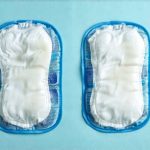Winter can be a challenging time for many, but for those experiencing bladder sensitivity – whether due to Interstitial Cystitis (IC), overactive bladder, or other conditions – the colder months often bring heightened discomfort. The combination of increased indoor heating, holiday indulgences, and simply being exposed to lower temperatures can significantly exacerbate symptoms like urgency, frequency, and pain. Understanding why winter specifically impacts bladder health is the first step towards finding effective coping strategies. It’s not just about the cold itself; it’s a complex interplay between temperature shifts, lifestyle changes, and how our bodies react to them. Many find that their bladders become more reactive during this season, requiring adjustments to routines and habits to maintain some level of comfort and normalcy.
This article aims to provide practical tips and insights for navigating winter with bladder sensitivity. It’s about empowering you to proactively manage your symptoms and minimize disruption to your daily life. We will explore the connection between cold weather and bladder health, delve into specific avoidance strategies tailored to common triggers, and offer helpful lifestyle adjustments that can make a significant difference. Remember, managing bladder sensitivity is often about finding what works best for you through experimentation and careful observation, and seeking guidance from healthcare professionals when needed. This isn’t about eliminating all enjoyment during the winter; it’s about adapting so you can still participate in festive activities and remain comfortable throughout the season.
Understanding the Winter-Bladder Connection
The increased incidence of bladder sensitivity symptoms in winter isn’t a coincidence. Several factors converge to create this challenging situation. Firstly, cold temperatures cause vasoconstriction – the narrowing of blood vessels. This reduces blood flow not only to extremities but also potentially impacts pelvic floor muscles and organs, including the bladder. Reduced blood flow can lead to muscle tension and increased sensitivity. Secondly, indoor heating systems often dry out the air, which can irritate the bladder lining. Dehydration is more common in winter as we are less inclined to drink enough water when it’s cold, further exacerbating irritation.
Beyond physiological changes, lifestyle factors play a significant role. The holidays bring an abundance of tempting foods and beverages that are often known bladder irritants – think caffeine, alcohol, spicy dishes, and sugary treats. We also tend to be less active during winter months, which can contribute to constipation, putting extra pressure on the pelvic floor and bladder. This combination of factors creates a perfect storm for increased bladder symptoms. It’s important to recognize that these aren’t separate issues; they are interconnected elements contributing to overall bladder reactivity. To further support healthy habits, consider incorporating hydrating soups into your diet during colder months.
Finally, changes in clothing habits also matter. Tight-fitting clothing can restrict blood flow and put pressure on the pelvic region, potentially triggering discomfort. Layering is crucial for warmth, but it shouldn’t compromise comfort or circulation. Acknowledging these connections allows us to proactively address them.
Cold Avoidance Strategies: Beyond Just Staying Warm
Direct cold exposure isn’t always the culprit; often, it’s about minimizing irritation and maintaining proper hydration. This begins with preventative measures. Layering clothing is essential – focusing on warm, loose-fitting garments that don’t constrict the pelvic area. Thermal underwear, comfortable sweaters, and insulated pants are excellent choices. Pay particular attention to keeping your core warm, as this helps maintain overall blood flow. Avoid sitting for prolonged periods in cold environments; regular movement promotes circulation.
Hydration remains paramount. Even though you may not feel as thirsty in winter, it’s crucial to drink plenty of water throughout the day. Aim for at least 8 glasses (64 ounces) and consider carrying a reusable water bottle as a visual reminder. Herbal teas (non-caffeinated!) can also contribute to your fluid intake while providing soothing benefits. Be mindful of bladder irritants, especially during holiday gatherings. While it’s okay to indulge occasionally, moderation is key. Consider alternatives to traditional festive drinks like sparkling cider instead of champagne or herbal tea instead of coffee. For those looking for guidance on maintaining adequate hydration, hydration strategies can be incredibly helpful.
Finally, consider using localized warming techniques. A warm water bottle or heating pad applied to the lower abdomen can help relax pelvic floor muscles and alleviate discomfort. However, always use caution when applying heat – avoid direct contact with skin for extended periods and never use a heating pad while sleeping.
Minimizing Dietary Triggers
Diet plays a pivotal role in bladder health, and winter’s temptations often present challenges. The key is to identify your personal triggers and adjust accordingly. Common culprits include:
– Caffeine (coffee, tea, soda)
– Alcohol (especially beer and wine)
– Spicy foods
– Acidic fruits and juices (citrus, tomatoes)
– Artificial sweeteners
Keeping a food diary can be incredibly helpful in pinpointing which items exacerbate your symptoms. This isn’t about eliminating all enjoyable foods forever; it’s about making informed choices and finding balance. For individuals seeking to better understand their dietary sensitivities, exploring food diary tips can be a valuable step.
Here are some practical steps:
1. Read labels carefully to identify hidden sources of bladder irritants.
2. Experiment with substitutions – herbal teas for coffee, sparkling water for soda.
3. Moderate your intake of trigger foods during festive occasions.
Focus on incorporating anti-inflammatory foods into your diet. Foods rich in omega-3 fatty acids (salmon, flaxseeds), antioxidants (berries, leafy greens), and fiber can help support overall health and potentially reduce bladder inflammation. To further refine dietary choices for optimal bladder wellness, consider smart grocery shopping.
Pelvic Floor Health & Exercise
A strong and relaxed pelvic floor is crucial for bladder control and reduced sensitivity. Winter’s decreased activity levels can contribute to muscle tension and weakness in this area. Regular gentle exercise – even short walks or yoga sessions – can improve circulation and promote pelvic floor health. However, avoid high-impact activities that put excessive stress on the bladder.
Consider incorporating targeted pelvic floor exercises (Kegels), but perform them correctly to avoid exacerbating symptoms. It’s best to learn proper technique from a physical therapist specializing in pelvic floor dysfunction. Overdoing Kegels can actually tighten muscles and increase discomfort, so moderation is key. Maintaining an active lifestyle, even indoors, can be supported with post-meal movement strategies.
Furthermore, stress management techniques are vital. Stress can significantly impact bladder function, leading to increased urgency and frequency. Practices like deep breathing exercises, meditation, or mindfulness can help calm the nervous system and reduce tension in the pelvic floor.
Creating a Warm & Comfortable Environment
Beyond personal habits, your immediate environment can greatly impact bladder health. Maintaining consistent temperature regulation is crucial. Avoid drastic shifts between cold outdoor air and warm indoor environments. A programmable thermostat can help maintain a comfortable and stable temperature indoors.
Consider investing in a humidifier to counteract the drying effects of heating systems. Proper humidity levels (around 40-60%) can prevent bladder irritation caused by dry air. Ensure adequate lighting – darker spaces can sometimes exacerbate feelings of discomfort or anxiety. Finally, create a relaxing bedtime routine that promotes restful sleep. Sleep deprivation can worsen bladder symptoms, so prioritizing quality rest is essential for overall well-being. Remember to prioritize self-care throughout the winter months; it’s not selfish – it’s necessary for managing your health and maintaining a good quality of life. Optimizing your home environment can contribute to overall bladder relaxation.





















